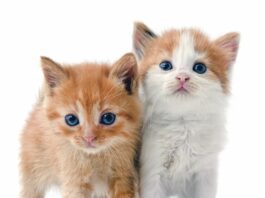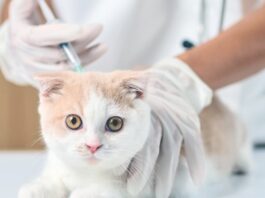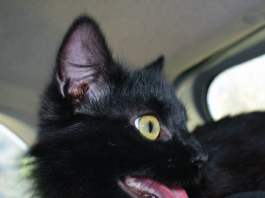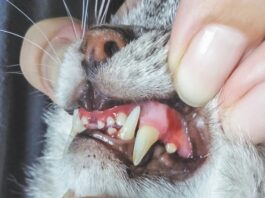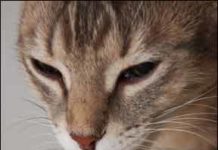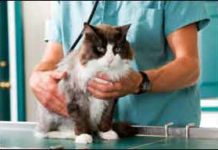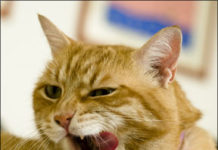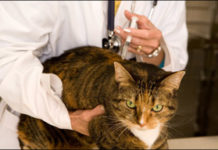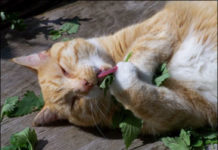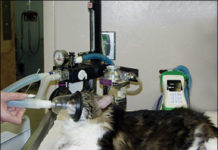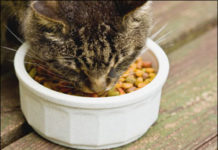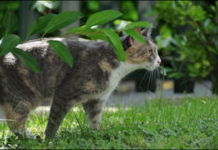Short Takes: February 2011
Multiple endocrine glandular failure is recognized in humans, yet it is an uncommonly recognized phenomenon in veterinary medicine. This retrospective study ("Multiple endocrine diseases in cats: 15 cases [1997-2008]," Journal of Feline Medicine & Surgery, 2010) included a population of cats from a university veterinary teaching hospital diagnosed with multiple endocrine disorders.
Emergency Care for Your Cat
Perhaps the most important characteristic of a responsible cat owner is the ability to distinguish the signs of minor feline illnesses from those calling for an immediate trip to the nearest animal emergency care facility. Cat owners should be equipped ahead of time to deal promptly with such a crisis. They should know precisely where the clinic is located, the speediest route to get there, how to transport the afflicted animal, what documents they should take to the facility - and what to expect to happen upon arrival.
Short Takes: December 2010
Researchers developed a questionnaire for evaluation of cat owners perception of and knowledge about vaccination of cats, with owners asked to fill out a separate questionnaire for each cat they owned. A total of 3,163 questionnaires were evaluated ("Use of a web-based questionnaire to explore cat owners attitudes towards vaccination in cats," Veterinary Record, 2010). Vaccination as a kitten was the strongest predictor of up-to-date vaccination status, followed closely by plans to take the cat to a boarding cattery or cat show in the coming year. Owners who ranked the severity of infectious diseases or veterinary advice as very important were more likely to vaccinate their cats than owners who perceived these factors as less important.
Osteosarcoma: A Serious Diagnosis
Thanks to the numerous advances in veterinary medicine, many of the cancers to which cats are susceptible are now controllable, sometimes curable - and even preventable (in the case of mammary cancer, for example). This does not always hold true, however, for osteosarcoma, a highly destructive feline bone cancer for which there is no known cure unless it is detected early. Once osteosarcoma has invaded a cats body, the best that the animals owner can hope for is early diagnosis and management of the disease. If the cancer is confined to a limited area of an affected cats body, successful treatment will almost always involve surgical excision - the amputation of a leg, for example, or the removal of a part of the animals jawbone - in which case the cat may go on living for years.
Compounding Medications: Helpful
Some cats are simply perfect patients. They sit calmly for nail trims and they let you look inside their mouths and even brush their teeth, purring all the while. Other cats, however, are not so accommodating. You merely think about trimming their nails and they disappear in a flash. Getting a pill into them requires protective gear and strong determination. Most cat owners know that there are a lot of different ways of getting medications into cats, but the desperate owners of hard-core pill haters sometimes need to go the extra mile to find a solution.
Feline Respiratory Infections
Your best friends cat always seems to be ill. During your occasional visits to her home, the cat is often wheezing, sneezing and coughing. Her eyes are red and watery, and she acts lethargic. Your friend says that these signs tend to persist for a week or so - but then she seems to be all right again for a while. Its quite likely that the cat is suffering from a deeply rooted upper respiratory infection, a highly contagious disease affecting her nose, sinuses, pharynx and larynx - the structures that filter, heat and dehumidify inhaled air before it flows to her lungs.
Short Takes: July 2010
This study ("The influence of olfactory stimulation on the behaviour of cats housed in a rescue shelter" in Applied Animal Behavior Science, 2010) examined the impact of environmental enrichment in an animal shelter when "novel smells" (odors other than those normally encountered in the shelter environment) were introduced in the cats enclosure. The odor exposure was presented as odorless cloth, or cloths permeated with the odor of rabbit, catnip or lavender.
Critical Care for Your Cat
A virtually comatose cat was rushed by its distraught owners into the emergency unit of the Cornell University Hospital for Animals (CUHA). The animal, a neutered two-year-old male, hadnt eaten a bite of food or consumed a drop of water for the previous 24 hours. The night prior to his arrival at the hospital, the cat had spent nearly an hour straining in his litter box, apparently in considerable pain, but had neither urinated nor defecated. When his owners awoke the following morning to find the poor animal vomiting intermittently, they finally agreed that emergency care might be warranted. Lucky for them, not to mention the ailing cat, they moved into action. By the time they reached the hospital, the cat was breathing with great effort and lying motionless on his side. A team of veterinarians and licensed veterinary technicians immediately noticed that the animals bladder was grossly swollen. Clearly, it had a blockage in its lower urinary tract that prevented the passage of urine. The team went speedily to work, feeding fluids into the animal intravenously while relieving the obstruction in its urethra.
Anesthesia: Whats Involved?
Any surgical procedure that will be painful to your cat - whether its a matter of stitching up a wound, pulling a tooth, repairing a fractured limb or removing a diseased organ - will require that the animals pain perception be dulled, if not totally blocked, by an anesthetic of some sort. What are the chances, an owner might wonder, that the animal, while surviving the operation itself, will fail to fully regain its senses? Or worse: What if it fails to awaken from its drug-induced sleep? "Theres always a risk," acknowledges James Flanders, DVM, an associate professor of surgery at Cornell Universitys College of Veterinary Medicine. "But if the cat is known to be in generally good health and if the anesthetic drugs are used properly, the chance that something will go wrong is very slim." Dr. Flanders assessment is supported by a study published in the Journal of the American Animal Hospital Association that involved tens of thousands of cats. Results showed that for every 1,000 deaths occurring during or subsequent to feline surgery, only one could be directly attributed to anesthesia. This impressive safety record is largely attributable to gains during the past half-century in understanding the medications that are used, and the techniques for monitoring the condition of the animal.
Short Takes: 10/09
House Resolution 3501 - more commonly referred to as the Humanity and Pets Partnered Through the Years, or HAPPY Act - would amend the Internal Revenue Code to allow an individual to deduct up to $3,500 for "qualified pet care expenses."These expenses are defined as "amounts paid in connection with providing care (including veterinary care) for a qualified pet other than any expense in connection with the acquisition of the qualified pet." "Qualified pet" is defined as "a legally owned, domesticated, live animal." It does not include animals used for research or owned or used in conjunction with a trade or business. Introduced on July 31, the measure was drafted in conjunction with data from the American Pet Products Associations National Pet Owners Survey. It has been referred to the House Committee on Ways and Means. The Pet Industry Joint Advisory Council (PIJAC) issued a Pet Alert on Aug. 5 supporting the proposal. "Providing pet owners the opportunity to deduct pet care expenses is an important step towards ensuring that pet owners provide adequate veterinary and other necessary pet care," PIJAC stated. "It encourages responsible pet ownership and will hopefully reduce the abandonment of pets by people struggling as a result of the economic downturn."
Feline Digestive Disorders
Digestive system disorders in general are among the most frequently observed health problems in cats. While many of these disorders are primarily associated with organs such as the liver, pancreas and gall bladder - all of which play a crucial role in the digestive process - plenty of them are centered in the alimentary canal, the long tube leading from a cats mouth to its anus. Most Common. By far the most prevalent feline digestive tract disorder, says Dr. Bartges, is inflammatory bowel disease (IBD). The condition, characteristically evidenced by chronic vomiting and diarrhea, is widely thought to be the consequence of several different disorders involving the feline immune system. The changes that are consistently found upon microscopic analysis in the lining (mucosa) of an affected cats intestines - a superabundance of immune system cells, for example - suggest that abnormal immune system activity may precipitate the disease.
The Long Arm of the Law
We live in a litigious society. We have laws governing birth, death and the taxes in between, so its no surprise that we also have a host of laws relating to the animals weve taken into our homes. At the federal level, laws generally address issues such as the safety of pet food, the impact of hazardous products on pets, evacuating and transporting pets during emergencies and regulating the use of animals in research. But most of the laws directly affecting our pets are made at the state and local level. These ordinances can differ by city, township and county, and pet owners should contact local officials when getting a new pet or moving to a new place to find out what possible laws pertain.


